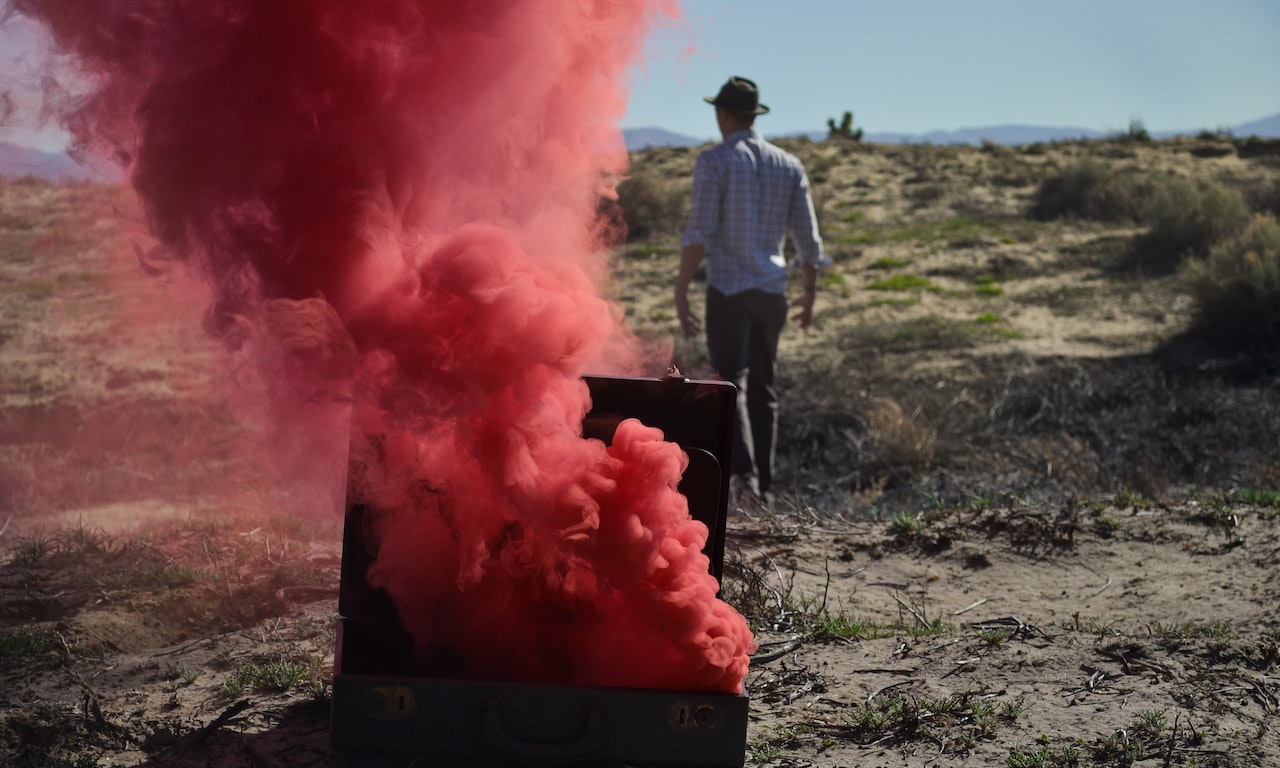Factors to Consider when Choosing a Cooler for Camping
When planning a delightful camping excursion, one must not overlook the importance of a suitable cooler to preserve the freshness of victuals and libations. However, with an abundance of options at one’s disposal, the task of selecting the most appropriate cooler can be quite overwhelming. To assist in making an informed decision, here are some factors one should take into consideration:
Size and Capacity
1. Determining the requisite quantity of comestibles and potations: Prior to making a selection, it is imperative to estimate the amount of sustenance and beverages required for the camping sojourn. This shall aid in choosing a cooler with a capacity that can aptly accommodate the supplies.
2. Considering the spatial limitations of the camping locale: One must duly contemplate the available space within the camping area. Should the space be rather limited, it may be prudent to opt for a smaller cooler that can be comfortably nestled within the camping arrangement.
Insulation and Ice Retention
1. Evaluating the insulation materials and thickness of the cooler: The insulation of a cooler is of paramount importance in preserving the desired temperature within. Seek out coolers with substantial insulation and crafted from superior materials such as foam or polyurethane, as they provide enhanced insulation and aid in the retention of ice for protracted periods.
2. Assessing the manufacturer’s claim regarding ice retention time: It is advisable to peruse the manufacturer’s specifications pertaining to the duration for which the cooler can maintain the frigidity of the victuals and potations. This is especially crucial if one intends to embark on an extended camping sojourn.
Durability and Portability
1. Scrutinizing the composition and construction of the cooler: The durability of a cooler should be taken into account. Seek out coolers fashioned from resilient materials such as rotomolded plastic or stainless steel, as they exhibit greater resistance to wear and tear. Additionally, inspect the overall construction to ensure it is capable of withstanding the rigors of the great outdoors.
2. Verifying the presence of handles, wheels, and straps for effortless transportation: The portability of a cooler should not be overlooked. Handles, wheels, and straps can facilitate the transportation of the cooler, particularly when traversing long distances or navigating treacherous terrains.
Additional Features
1. Assessing the presence of drain plugs and cup holders: Drain plugs are a convenient addition for the purpose of expelling melted ice, while cup holders provide a convenient spot for one’s potations. Consider these supplementary features based on personal preferences and the requirements of the camping expedition.
2. Contemplating the existence of built-in bottle openers and cutting boards: Certain coolers are equipped with built-in bottle openers and cutting boards, which can prove invaluable for outdoor culinary endeavors and the enjoyment of chilled potations. Determine whether these features would enhance one’s camping experience.
Price and Value for Money
1. Comparing prices across various brands and models: Engage in meticulous research and compare the prices of different coolers from an array of esteemed brands. Take note of any additional features or warranty offers that may influence the overall value for money.
2. Weighing the features and quality against the price: One must consider the features, quality, and durability of the cooler in relation to its price. Striking a harmonious balance between affordability and functionality is vital to ensure one obtains the utmost value for their monetary expenditure.
The Most Excellent Coolers for Campers
When embarking upon a camping sojourn, one cannot underestimate the significance of a dependable cooler to preserve victuals and libations. In this discourse, I shall acquaint you with three eminent purveyors of coolers, exquisitely tailored for your camping escapades.
Affectionately Known as Brand the First
Brand the First, with a sterling reputation, proffers an extraordinary cooler, crafted with unwavering devotion to sturdiness. Its robust construction is a testament to its ability to withstand the vagaries of the elements. Within its capacious confines, a veritable cornucopia of sustenance and beverages may be housed, rendering it a paragon for protracted camping sojourns. Noteworthy attributes comprise a secure lid latch, well-insulated walls, and a drain plug for facile cleansing. It enjoys laudable acclaim for its unswerving ice preservation and indomitable constitution, though a few voices do concede that when laden to full capacity, it can prove somewhat cumbersome to bear.
The Second Brand, an Emblem of Portability
For the itinerant camper who prizes mobility above all, the Second Brand unveils a pint-sized, lightweight cooler, custom-fitted for on-the-move escapades. It boasts insulating artistry that bestows a prolonged icy tenure to victuals and spirits. Its lid, resistant to leaks, and a convenient handle for ease of conveyance render it an invaluable comrade in the wild. The testimonies of admirers resound in praise of its chilling prowess and dainty proportions, yet, it should be acknowledged that for protracted camping sojourns involving larger groups, the slight constraints of size may exert an influence.
Brand the Third, Epitome of Versatility
Brand the Third ushers in a multifaceted cooler, proficiently attuned to a panoply of camping exigencies. This assemblage of coolers boasts an array of compartments and pockets, affording the adept organization of comestibles and potations. Constructed from materials that defy the roughness of the great outdoors, it bears testament to its rugged constitution. Amongst its standout attributes, one finds a removable shoulder strap, zippers easily accessible, and a built-in bottle opener. Admirers extol its vast capacity and thoughtful design, even though the refrain of some critics laments a room for improvement in the realm of insulation to heighten ice preservation.
In the realm of camping coolers, the three illustrious brands detailed herein present themselves as worthy contenders, each endowed with unique virtues, catering to the varied tastes and necessities of intrepid campers.
Expert Counsel on Enhancing Cooler Efficacy
When one is embarked upon the noble endeavor of preserving victuals and potations at an alfresco soiree or a pastoral repast, adhering to the sagacious counsel of experts can verily transform the performance of one’s cooler. The cardinal rule, of course, is to ensure the cooler’s temperature begins at its nadir. To this end, the judicious pre-chilling of the receptacle ere the comestibles and nectars are bestowed therein is indispensable. This salutary practice may be accomplished by inserting ice packs or vessels brimming with congealed aqua into the cooler’s recesses a few hours antecedent to its loading. Instead of employing amorphous ice, the discerning camper shall favor block ice or phials of frozen water. Such choices, sir or madam, confer upon the cooler a prolonged tenure of frigidity.
Furthermore, the organizational mien of the cooler merits a judicious attention. Verily, it is imperative to segregate the perishable comestibles from the spirited potations, and to employ dividers and baskets to effect a stratification within. This stratagem not only preserves the desired temperature but also serves as a bulwark against the peril of commingling flavors. A virtuous undertaking, indeed.
In addition, circumspection must be exercised to limit the frequency of the cooler’s orifice being agape, for the ingress of temperate air is a swift underminer of the coolth within. The maxim ‘Look not, lest thy coolth depart’ is one to be well-heeded.
And yet, the locale of the cooler must not be overlooked, for it is no trifling matter. The cooler should be ensconced in a shaded alcove, far removed from the direct and fervent gaze of the sun. The solar orb’s radiant touch is apt to impart an unwelcome warmth, and thus the prudent choice of locale is paramount in extending the epoch of the cooler’s refrigerant efficacy.
Thus, with these precepts held fast in mind, one may embark upon their outdoor sojourn with the utmost confidence in the superiority of their cooler, assured that their provender shall remain in the pinnacle of freshness and coolth throughout the day’s escapades.
Frequently Asked Questions about Coolers for Camping
When it comes to preserving the freshness of your victuals and libations during a delightful sojourn in the great outdoors, coolers play a most vital role. Herein lie some frequently posed inquiries concerning camping coolers, designed to assist you in optimizing your outdoor adventures.
How long can a cooler keep food and beverages cold?
The duration for which a cooler can maintain the frigidity of its contents is contingent upon several factors, including the caliber of the cooler itself, the ambient temperature, and the frequency with which the cooler is opened. In general, coolers of superior quality can sustain the icy embrace of their contents for several days, whilst those of lesser insulation may endure for but a day or two. To maximize the longevity of cooling, it is advisable to employ block ice, to position the cooler in a shaded locale, and to minimize unnecessary perusal of its contents.
Can I use dry ice in a camping cooler?
Indeed, it is permissible to utilize dry ice within the confines of a camping cooler, albeit with certain precautions to be observed. Dry ice, composed of solid carbon dioxide, possesses an extraordinary chilliness and is capable of maintaining low temperatures for an extended period. However, it ought to be handled with circumspection, as direct contact with it can prove deleterious. Assure the presence of adequate ventilation within the cooler to facilitate the escape of gas, and always don protective gloves when manipulating dry ice.
What is the ideal ice-to-contents ratio for optimal cooling?
The optimal ratio of ice to contents is typically 2:1, signifying the use of two parts ice for every one part of comestibles and potations. This proportion serves to uphold a consistent and low temperature within the cooler. Furthermore, it is advisable to pre-chill your victuals and libations prior to their placement within the cooler, thereby enhancing the efficacy of cooling.
How can I clean and maintain my camping cooler?
To ensure the continued efficacy and longevity of your camping cooler, it is imperative to cleanse it after each use. Employ a mixture of mild detergent and water to scrub the interior and exterior surfaces. Rinse thoroughly and allow the cooler to dry with its lid ajar. Regularly inspect the seals for any indications of wear and tear, as they are pivotal to the insulation of the cooler. Lubricate the hinges as necessary and store the cooler with its lid slightly open to prevent the development of malodorous odors.
Are there any alternative cooling methods for camping?
Whilst coolers are the most prevalent means of preserving the coldness of your provisions during a camping excursion, alternative methods do exist. Portable electric coolers, which operate on 12-volt power sources or solar panels, can be utilized. Another option entails freezing items such as water bottles or gel packs and employing them to maintain the chill within your cooler. Additionally, certain camping sites provide communal refrigeration facilities wherein campers may store their perishable items.
V. Conclusion
When one is in the process of selecting a camping cooler, there are several significant factors that ought to be taken into account. Firstly, it is of utmost importance that the size and capacity of the cooler are in accordance with one’s needs and the duration of their camping sojourns. Moreover, the insulation and ice retention capabilities are of great consequence, as they play a pivotal role in ensuring the sustenance of coldness for an extended period of time, thereby keeping one’s comestibles and potables chilled. Additionally, durability and portability are also key considerations, for it is imperative to possess a cooler that can withstand the harsh outdoor milieu and is facile to transport. On the basis of user reviews and expert recommendations, there are a few preeminent coolers that one may contemplate, such as the Yeti Tundra, Coleman Xtreme, and Igloo BMX. These esteemed coolers have consistently garnered positive feedback for their exemplary performance and unwavering reliability. In order to optimize the performance of one’s camping cooler, experts proffer the recommendation of pre-chilling it prior to use, shielding it from direct sunlight, and minimizing the frequency of opening and closing the cooler. Lastly, it is of paramount importance to undertake further research and comparison prior to making a purchase decision, for the market is replete with a plethora of options that boast varying features and price points.
Frequently Asked Questions about Coolers for Camping
How long can a cooler keep food and beverages cold?
The duration for which a cooler can maintain the frigidity of its contents is contingent upon several factors, including the caliber of the cooler itself, the ambient temperature, and the frequency with which the cooler is opened. In general, coolers of superior quality can sustain the icy embrace of their contents for several days, whilst those of lesser insulation may endure for but a day or two. To maximize the longevity of cooling, it is advisable to employ block ice, to position the cooler in a shaded locale, and to minimize unnecessary perusal of its contents.
Can I use dry ice in a camping cooler?
Indeed, it is permissible to utilize dry ice within the confines of a camping cooler, albeit with certain precautions to be observed. Dry ice, composed of solid carbon dioxide, possesses an extraordinary chilliness and is capable of maintaining low temperatures for an extended period. However, it ought to be handled with circumspection, as direct contact with it can prove deleterious. Assure the presence of adequate ventilation within the cooler to facilitate the escape of gas, and always don protective gloves when manipulating dry ice.
What is the ideal ice-to-contents ratio for optimal cooling?
The optimal ratio of ice to contents is typically 2:1, signifying the use of two parts ice for every one part of comestibles and potations. This proportion serves to uphold a consistent and low temperature within the cooler. Furthermore, it is advisable to pre-chill your victuals and libations prior to their placement within the cooler, thereby enhancing the efficacy of cooling.
How can I clean and maintain my camping cooler?
To ensure the continued efficacy and longevity of your camping cooler, it is imperative to cleanse it after each use. Employ a mixture of mild detergent and water to scrub the interior and exterior surfaces. Rinse thoroughly and allow the cooler to dry with its lid ajar. Regularly inspect the seals for any indications of wear and tear, as they are pivotal to the insulation of the cooler. Lubricate the hinges as necessary and store the cooler with its lid slightly open to prevent the development of malodorous odors.
Are there any alternative cooling methods for camping?
Whilst coolers are the most prevalent means of preserving the coldness of your provisions during a camping excursion, alternative methods do exist. Portable electric coolers, which operate on 12-volt power sources or solar panels, can be utilized. Another option entails freezing items such as water bottles or gel packs and employing them to maintain the chill within your cooler. Additionally, certain camping sites provide communal refrigeration facilities wherein campers may store their perishable items.











